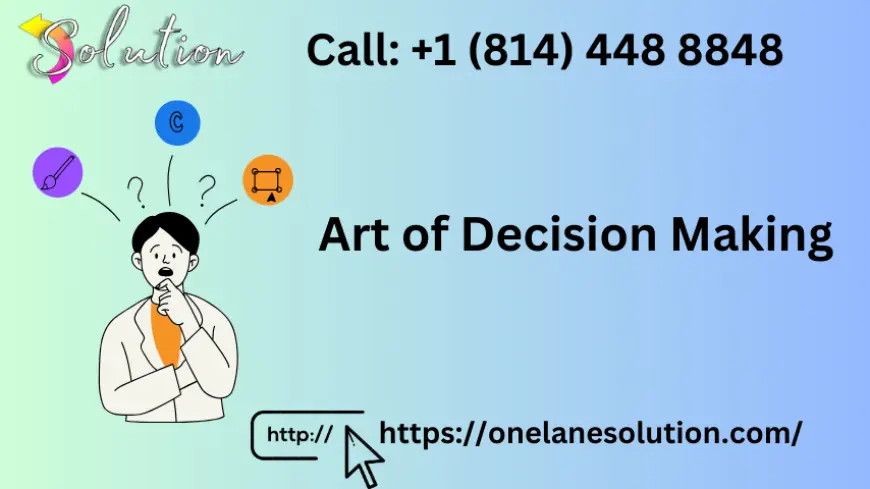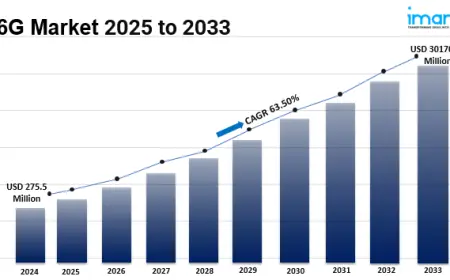The Art of Decision Making: Mastering Choices for Success
This comprehensive guide explores the art of decision-making, offering practical strategies such as critical thinking, leveraging decision-making models, balancing logic and intuition, managing risks, and learning from past choices. It highlights ways to overcome decision fatigue, embrace collaboration, and stay flexible for success in personal and professional contexts.

Effective decision-making is a cornerstone of success, whether in personal life, business, or leadership. The ability to make informed and timely decisions can mean the difference between progress and stagnation. This comprehensive guide explores the art of decision making, offering practical strategies and insights to improve your ability to choose wisely in any situation.
1. Understand the Decision-Making Process
At its core, decision-making is a structured process that involves evaluating options and selecting the best course of action.
- Identify the Problem: Clearly define the issue at hand to ensure focus.
- Gather Information: Collect relevant data, facts, and perspectives to build a solid foundation for your decision.
- Evaluate Alternatives: Analyze possible options, weighing their pros and cons.
- Make a Choice: Commit to the best option based on your analysis.
- Implement and Reflect: Take action and later assess the outcomes to refine future decisions.
A structured approach minimizes impulsivity and enhances clarity.
2. Embrace Critical Thinking
Critical thinking is essential for making sound decisions, as it allows you to evaluate situations objectively and avoid biases.
- Question Assumptions: Challenge preconceived notions and consider alternative viewpoints.
- Analyze Evidence: Look beyond surface-level data to uncover deeper insights.
- Avoid Emotional Traps: Recognize emotional influences that may cloud judgment.
- Stay Open-Minded: Be willing to adjust your decision based on new information or feedback.
Developing critical thinking skills equips you to navigate complex scenarios with confidence.
3. Leverage Decision-Making Models
Using established frameworks can streamline the decision-making process and provide clarity.
- SWOT Analysis: Assess strengths, weaknesses, opportunities, and threats to evaluate options comprehensively.
- The Eisenhower Matrix: Prioritize tasks based on urgency and importance to focus on what truly matters.
- The Decision Tree: Visualize possible outcomes and consequences of each choice for better foresight.
- Pareto Analysis: Focus on decisions that yield the greatest impact, aligning efforts with results.
These models serve as valuable tools to structure your thought process and guide your choices.
4. Balance Logic and Intuition
While logic is vital, intuition also plays a significant role in effective decision-making.
- Trust Your Gut: Experience and instincts often provide valuable insights that logic may overlook.
- Combine Perspectives: Use data-driven analysis alongside intuitive insights for a well-rounded approach.
- Recognize Patterns: Intuition often stems from recognizing patterns based on past experiences.
Balancing logic and intuition allows for both analytical precision and creative problem-solving.
5. Manage Risk and Uncertainty
Every decision carries some level of risk and uncertainty. Managing these factors effectively is key to making confident choices.
- Assess Potential Risks: Identify possible challenges and create contingency plans.
- Accept Uncertainty: Understand that not all variables can be controlled or predicted.
- Take Calculated Risks: Weigh the potential rewards against the risks to determine feasibility.
By embracing risk management, you can make decisions that are both ambitious and responsible.
6. Collaborate for Better Decisions
Involving others in the decision-making process can lead to more robust and innovative solutions.
- Gather Diverse Perspectives: Seek input from individuals with different expertise and backgrounds.
- Encourage Open Communication: Create an environment where team members feel comfortable sharing their ideas.
- Build Consensus: Strive for alignment while respecting differing opinions.
- Delegate When Necessary: Empower team members to make decisions within their areas of expertise.
Collaboration fosters creativity and ensures that decisions are well-informed and inclusive.
7. Overcome Decision Fatigue
Decision fatigue can impair judgment and lead to poor choices over time.
- Simplify Routine Decisions: Automate or streamline repetitive choices to conserve mental energy.
- Prioritize High-Stakes Decisions: Focus your energy on decisions that have significant consequences.
- Take Breaks: Allow yourself time to recharge and gain perspective.
- Establish Clear Criteria: Set benchmarks for evaluating options to avoid overthinking.
By managing decision fatigue, you can maintain clarity and effectiveness in your decision-making.
8. Learn from Past Decisions
Reflecting on previous decisions—both successful and unsuccessful—offers valuable lessons for future choices.
- Analyze Outcomes: Identify what went well and what could be improved.
- Document Lessons Learned: Maintain a record of key takeaways for reference.
- Celebrate Successes: Acknowledge and replicate successful strategies.
- Adjust for Future Growth: Use insights to refine your decision-making approach.
Continuous learning enhances your ability to adapt and thrive.
9. Stay Flexible and Adaptable
Flexibility is essential in an ever-changing world where circumstances can shift rapidly.
- Monitor Outcomes: Keep track of the results of your decisions to identify the need for adjustments.
- Be Willing to Pivot: Recognize when a decision isn’t working and make necessary changes.
- Embrace Change: View unexpected developments as opportunities for growth.
Adaptability ensures resilience and long-term success in decision-making.
Also Read: Cinematic Gold: Underrated Movies to Watch Before the Year Ends
Conclusion
Mastering the art of decision-making is a lifelong journey that requires critical thinking, structured approaches, and a willingness to learn and adapt. By incorporating these strategies into your daily life, you can make informed, confident choices that drive success and fulfillment.
What's Your Reaction?
 Like
0
Like
0
 Dislike
0
Dislike
0
 Love
0
Love
0
 Funny
0
Funny
0
 Angry
0
Angry
0
 Sad
0
Sad
0
 Wow
0
Wow
0




















































